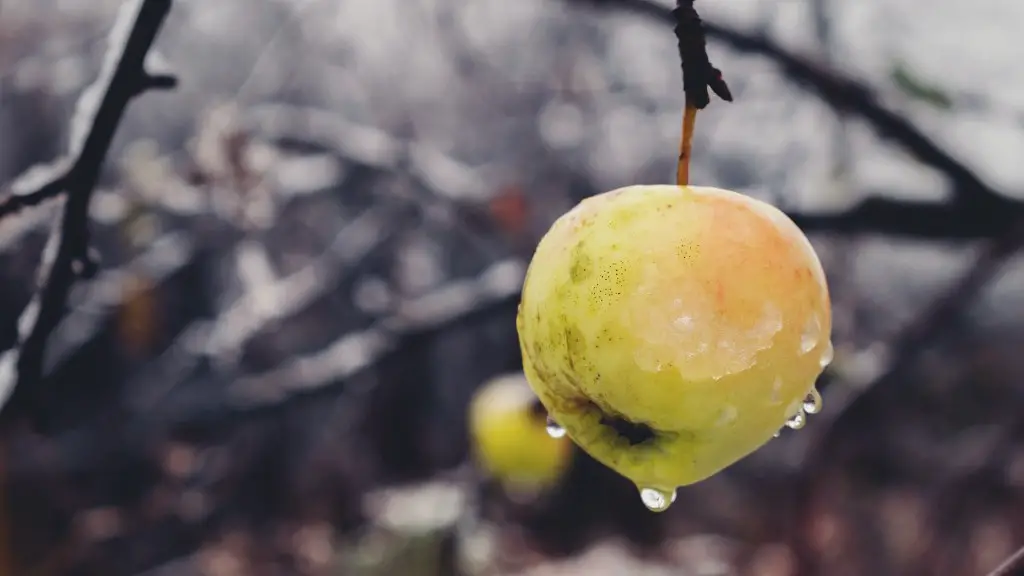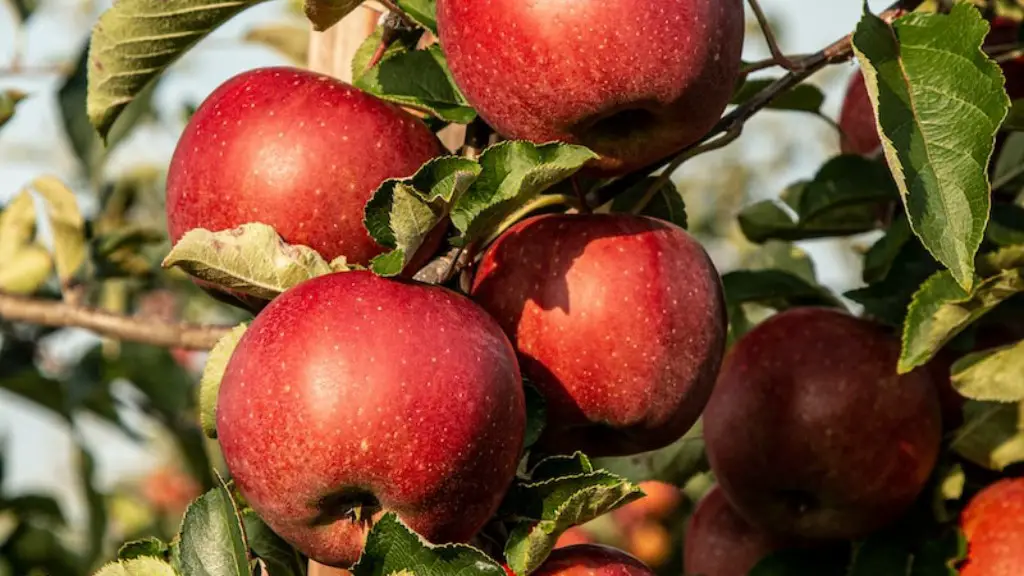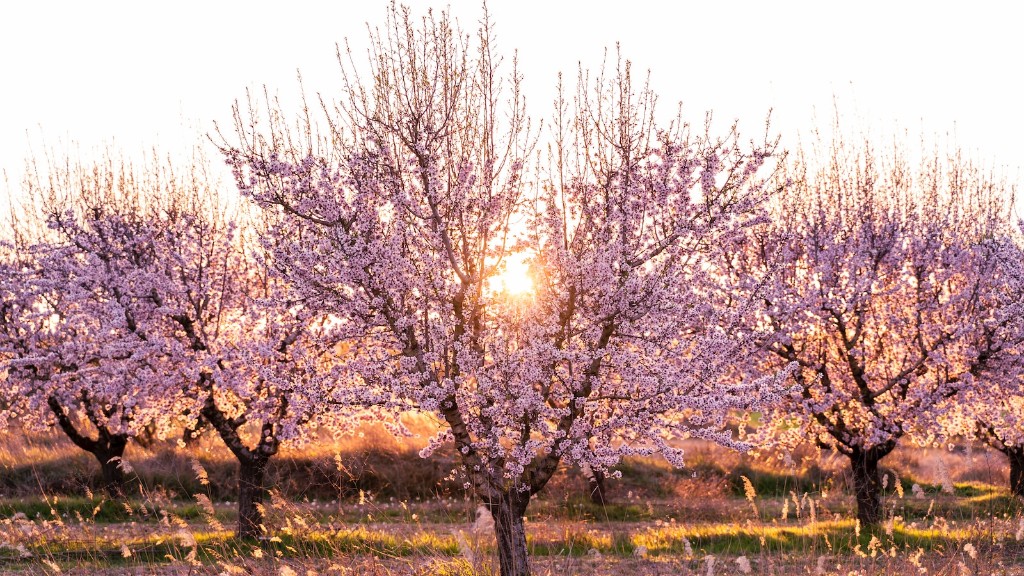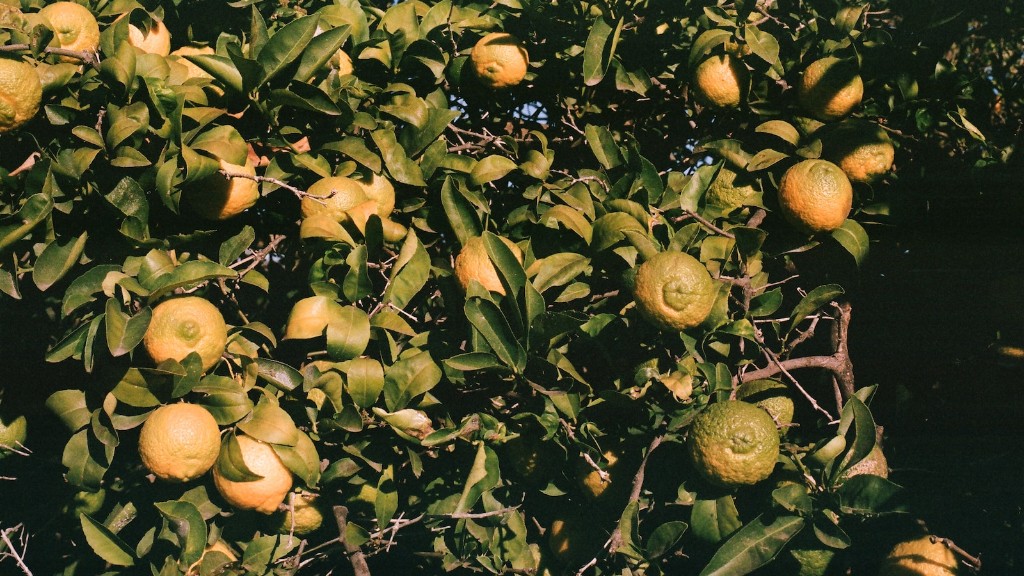How Many Avocados in a Tree?
Avocados are one of the few fruits that can be harvested all year round and they are thriving in popularity. Though they are easy to come by and delicious to eat, many people do not understand how many avocados can come from a single tree. Growing an avocado tree in the home garden can provide a reliable steady source of superior-tasting avocados.
Native to parts of Central and South America, avocados were introduced in parts of North America in the 18th century. Today, California and Florida are major exporters of this tropical fruit. Avocado trees require suitable conditions in order to thrive, such as a mild climate and an average temperature of 60-85degrees Fahrenheit. Ideal humidity levels are around 70%. With the right environment, it is possible to cultivate a large and productive tree from a single seed.
An average tree grown from seed can reach between 10-15 ft in height and bear between 75-150 avocados in a single season. However, it typically takes 7-13 years for an avocado tree to produce enough fruit to harvest. For commercial purposes, dwarf and semi-dwarf avocado trees are usually grown in order to maximize production. Dwarf varieties consist of a smaller variety of avocado tree grafted on to a rootstock that controls the trees height, while semi-dwarf trees are produced by grafting two smaller avocado varieties together, producing an even larger crop.
In an article titled “How Many Avocados Does an Avocado Tree Produce?”, the University of California’s Agriculture and Natural Resources explains that “A single tree can produce up to 500 avocados in a year under ideal growing conditions. This is a rare occurrence, however; most large trees produce between 150-200 avocados in a season. Trees that are under 15 ft tall and are grown from seed take at least three years to yield avocados, but larger trees can produce avocados in as little as two years.” Furthermore, commercial growers utilize irrigation systems and fertilizers in order to increase yield.
With increased demand for avocados, many people are turning to avocado trees as a means to cultivate and reap their own homegrown crop. Moreover, commercial growers continue to explore innovative strategies to maximize their yields. As such, those who wish to cultivate a homegrown crop of superior-flavored avocados should consider the amount of avocados they can expect to harvest per tree when deciding how to invest their time and energy into their own home-garden.
Growing Avocados: Variety and Adaptability
The adaptability of avocados is remarkable and it is thanks to its ability to adapt to different climates and soils that they thrive in many parts of the world. There are hundreds of varieties of avocados and they come in a variety of sizes, shapes, and colours. Some common varieties include the ‘Hass’, ‘Fuerte’, and ‘Reed’. Each of these varieties has its own unique qualities, with the taste and texture of the fruit varying from variety to variety. While some varieties produce a delicate, buttery-textured fruit, others are more firm and nutty.
Though the adaptability of avocados is astounding and they can be grown in almost any region, some areas of the world offer better conditions than others. In the United States, some areas are more favourable to growing and harvesting avocados than others. For example, it is possible to achieve better yields in California and Florida, as these areas have a more suitable climate for growing avocados. As such, those wishing to grow their own avocados should look into the specific climate conditions in their areas and select the appropriate varieties for those conditions.
In addition, the amount of maintenance the tree needs should also be taken into consideration when deciding to grow avocados. For example, if an individual wishes to grow a Hass avocado tree, the tree should be kept pruned and harvested regularly in order to achieve the best yield. Furthermore, avocado trees require adequate irrigation and fertilization in order to ensure optimal growth.
Avocados are a hardy and reliable fruit and can be easily grown in the home-garden. With the right climate, soil conditions, and maintenance, it is possible to reap a large harvest of rich and rewarding avocados in no time. The adaptability and versatility of avocados makes them a valuable commodity and they are sure to be a mainstay in the global food supply for many years to come.
Diseases and Pests
Unfortunately, avocado trees are prone to a range of diseases and pests, some of which can be extremely harmful. The most common pests include aphids, thrips, whiteflies, and scales. If left untreated, these pests can cause extensive damage to the tree, leading to stunted growth and lower yields. As such, regular monitoring and preventative measures are essential for keeping the tree healthy and productive.
In addition, avocados are susceptible to a range of fungal and bacterial diseases. Fungal diseases such as anthracnose, botrytis rot, and Phytophthora root rot can cause serious damage if not treated in time. Bacterial infections, such as crown gall and bacterial blight, can also be extremely damaging, leading to significant tree losses. As such, it is important to identify and treat any diseases as quickly as possible.
Aside from the pests and diseases, avocado trees also require regular pruning and thinning. If the tree is allowed to grow unchecked, the canopy of the tree can become too dense, leading to poor air circulation and increased chances of disease. Regular pruning and thinning of the branches will allow for adequate air circulation and also help to improve its overall health.
Though avocado trees are susceptible to diseases and pests, these issues can be addressed easily with the right preventive measures and treatments. Those looking to grow avocados should be aware of the potential health issues and take the necessary steps to ensure the health of their trees.
Harvesting and Storing Avocados
Harvesting avocados can be an exciting process, as it is the first step in bringing delicious avocados to your kitchen. Avocados are typically ready to harvest when the fruit has changed from its initial green colour to deep purple or black. Depending on the variety of avocado, the time for harvesting can vary from a few weeks to several months. Once the avocados have been harvested, they can be stored in cool, dry conditions for up to a few weeks.
In addition, the University of California’s Agriculture and Natural Resources suggests that “it is best to harvest the avocados when they are slightly under-ripe in order to prolong the shelf life of the fruit. Under-ripe avocados will take four to five days after harvest to fully ripen at room temperature. To slow down the ripening process, put them in the refrigerator. This will help keep the avocados fresh one to two weeks after harvest.”
When shopping for avocados, shoppers should look for firm, unblemished fruit. Once purchased, the avocados can be stored at room temperature until ripe, and then transferred to the refrigerator to prevent further ripening. Additionally, avocados can be sliced and frozen for up to six months, providing a great way to preserve the fruit and extend its shelf-life.
Harvesting and storing avocados is a simple process and provides a great way to enjoy this nutritious and delicious fruit. With the proper harvesting and storing method, it is possible to enjoy a large and reliable crop of homegrown avocados for many months to come.
Nutritional Value
Avocados are bursting with nutritional value, with a single serving providing up to 20 vitamins and minerals, including fiber, potassium, vitamin C, vitamin K, and folate. Furthermore, avocados are a source of healthy fats, which can help to regulate cholesterol levels in the body and provide energy.
Avocados contain monounsaturated fats, which can help to protect against heart disease and may even reduce the risk of type 2 diabetes. Additionally, these fats can help to increase the absorption of other nutrients, particularly carotenoids and other antioxidants. As such, avocados can be a great addition to any healthy diet.
Studies have found that avocados can help to reduce inflammation and improve digestive health. Avocados are also packed with antioxidants, which can help to protect against oxidative stress, which is linked to various chronic diseases. As such, adding avocados to your diet can help to boost your overall health and well-being.
Though avocados can be high in calories, they offer a range of health benefits that make them a valuable commodity in any healthy eating plan. A single serving of avocado can provide a boost to the body and help to protect against a range of health issues.
Economic Significance
Avocados are an important economic commodity and are a major cash crop in many parts of the world. In the United States alone, avocados are a multi-billion-dollar industry, with California and Florida producing the majority of the fruit. In fact, California is the largest producer of avocados in the United States, producing over 80% of the total crop.
Mexico is the world’s largest avocado producer and exporter, with a majority of the avocados grown being exported to the United States. The demand for avocados continues to rise, with global consumption increasing by 9% between 2018 and 2019. As such, the economic significance of avocados is only increasing and it is likely to remain an important global commodity for many years to come.
Aside from its economic importance, avocados are also a nutritional powerhouse and are bursting with health benefits. As such, it is easy to understand their rising popularity across the globe. Avocados are a reliable source of income for many farmers and they are sure to remain a global commodity for many years to come.




